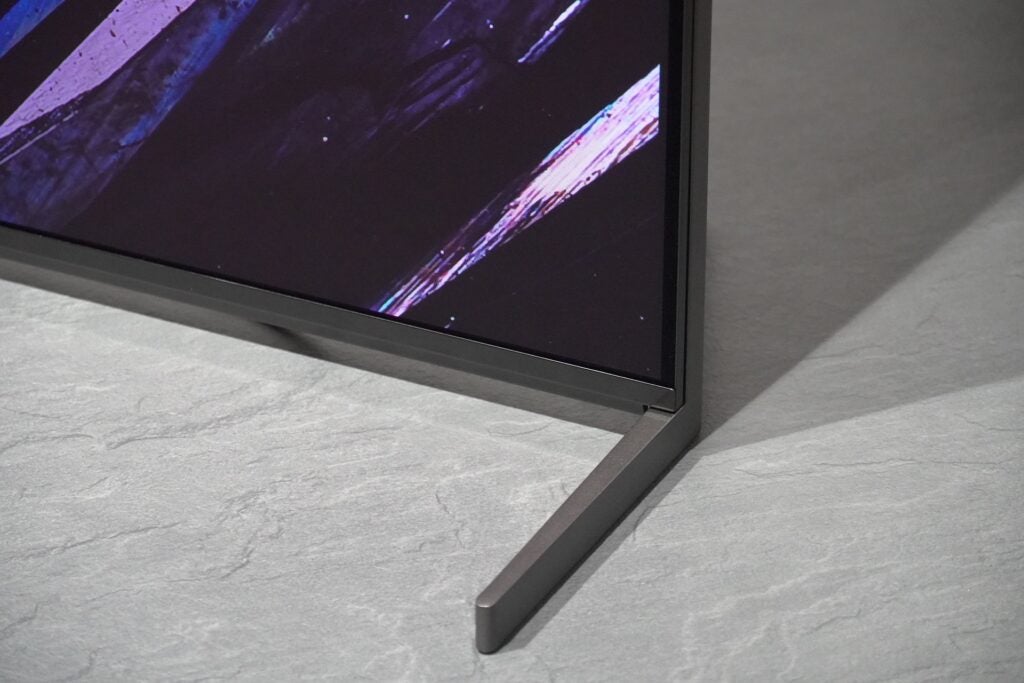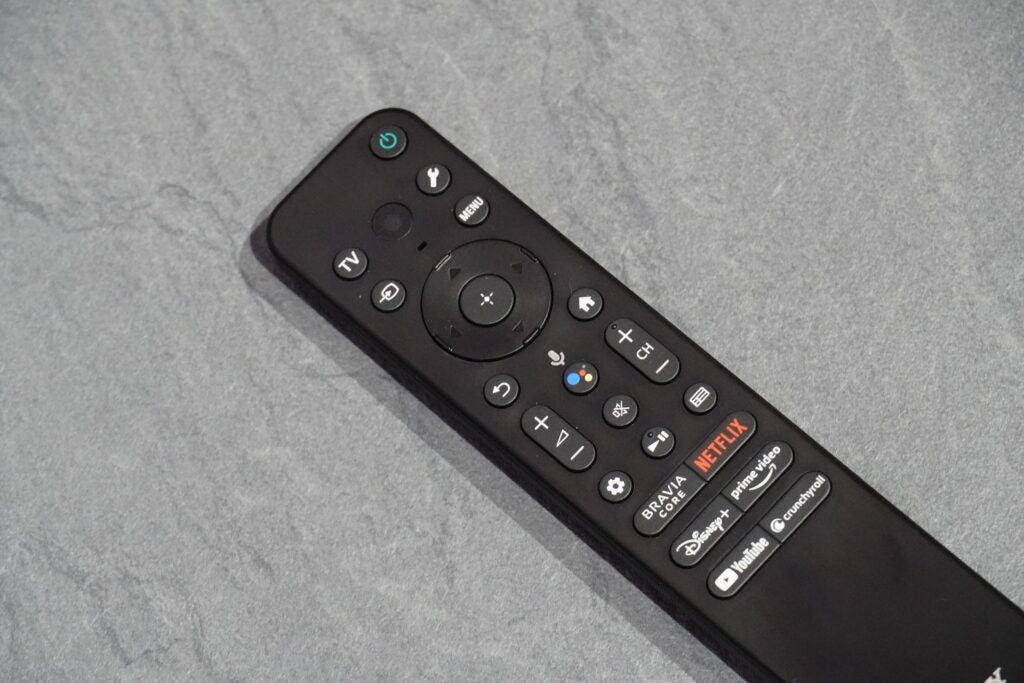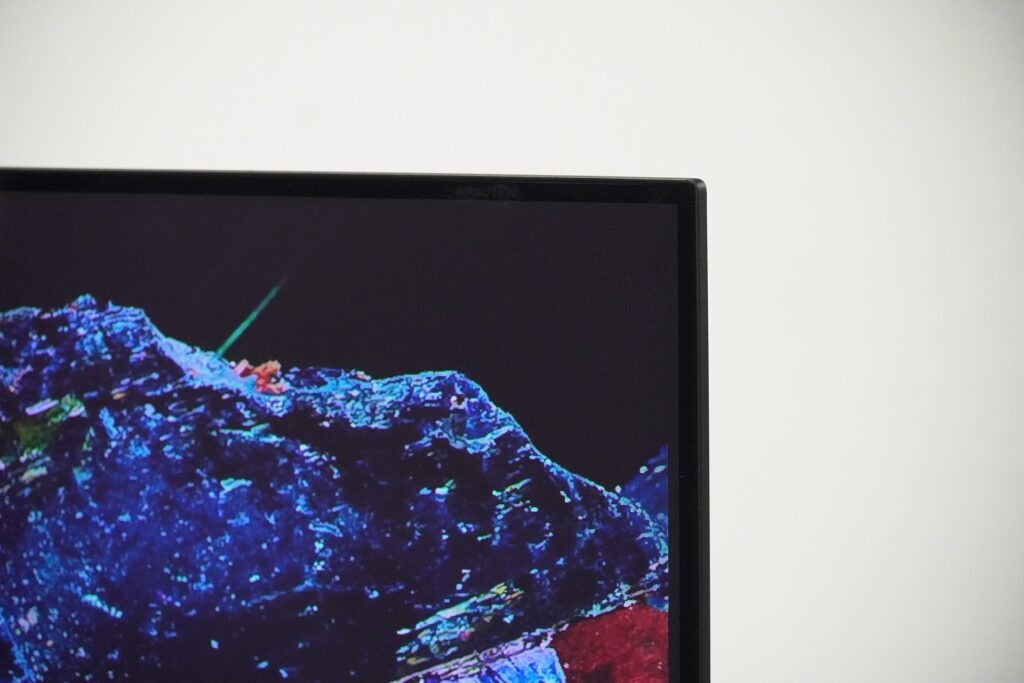The Sony A95L 4K TV looks to be an improvement over the A95K in terms of picture quality, though it remains to be seen how much it will cost and how competitive its gaming features are versus the competition.
Availability
- UKTBC
- USATBC
- EuropeTBC
- CanadaTBC
- AustraliaTBC
-
Dolby Vision GamingThe only model in the 2023 line-up to support Dolby Vision Gaming -
Game MenuChange gaming settings on the fly -
Eco DashboardSave energy by adjusting TV settings
Introduction
Sony’s TV line-up for 2023 has been revealed and it looks to be another year of evolution over revolution after introducing its Bravia XR TVs back in 2021.
Perching on the top of the 4K tree in Sony’s line-up is the upcoming A95L QD-OLED, replacing last year’s five-star wonder, the A95K. Improvements include a new brighter panel, a tweaked design and additional features regarding gaming and eco-minded energy preservation.
Of course, both Sony and Samsung are leading the way for QD-OLED technology, but each one will be looking to set the picture standard in their own way. Trusted Reviews headed to Sony HQ in Weybridge to get a glimpse of the A95L ahead of its worldwide unveiling.
Design
- New stand design
- Slimmer looking design
- Comes with the Bravia Cam
The big change in terms of the design is the stand. Instead of using the integrated stand that acted as a counterweight to keep the TV upright (with a slight lean of three degrees), Sony’s ditched that completely and gone for blade feet instead.

These feet can be positioned in any of three ways: out towards the sides, in a narrow position (for smaller furniture) or it can elevate the screen in order for a soundbar to be wedged in underneath.
Like Sony’s TVs for the past several years, the A95L features a smooth, aluminium bezel that frames the screen and ensures your eyes aren’t diverted anywhere else.

From behind it doesn’t stick out as much as previous Sony OLEDs have, maintaining a uniform depth across the rear panel that makes it look slimmer and discreet, the packaging of the processor and connections is neater and trimmer.
It also most likely makes for a more seamless fit if you’re looking to wall mount it. Inside is a heatsink to help manage and distribute energy and heat, and the A95L also comes packaged with the Bravia Cam as standard that you can plonk on top of the screen.
Features
- Adds Dolby Vision Gaming support
- New Game Menu for adjusting settings
- New Eco Dashboard for managing energy use
Features mostly cover the same ground as the 2022 range. The interface is Google TV for getting entertainment from streaming apps as well as personalising the whole curation process to keep you watching more and more. It’s Perfect for PlayStation 5, which essentially means it has the (useful) Auto HDR Tone Mapping to produce a more accurate HDR picture and Auto Genre Picture Mode, which is Sony’s fancy way of describing auto low latency mode for its TVs, automatically optimising the picture.
There are only two HDMI 2.1 inputs, so all that I wrote about the new MediaTek chip levelling the playing field for gaming appears to be hokum. 4K/120, variable refresh rate and auto low latency mode are supported. Dolby Vision HDR, IMAX Enhanced (which is compatible with Bravia Core) and Netflix Adaptive Calibrated mode are back again in terms of picture modes.

What’s new, at least in terms of gaming, is the Game Menu; with Sony taking a leaf out of other TV manufacturer’s playbooks and making it easier to change game settings on the fly (though we weren’t allowed to take images of this as it was still unfinalised).
There’s also Dolby Vision Gaming to optimise contrast, black levels and colour performance with games. There’s no confirmation on whether there’s 4K/120 support for that feature and, at least in my mind, it would be strange for Sony to support a feature that wasn’t present on its own gaming console…
Then there’s Eco Dashboard that’s coming to all of Sony’s new TVs in light of energy restrictions coming into effect in the EU. Here you are presented a picture of a tree, and as you change settings to reduce energy, the tree gets bigger. Quirky? Absolutely, but at least it shows Sony’s looking to rein in energy use.
Performance
- Brighter, more detailed picture
- Acoustic Center Sync with supported Sony soundbars
As the model of the A95L that I saw demoed was a pre-production prototype, it was limited in what Sony could present (and we weren’t allowed to take pictures). For instance, it could only show footage in the TV’s Vivid mode preset (although Sony’s tamed the luridness of Vivid mode’s colours to look especially good with its recent TVs). Set in Vivid mode, however, this apparently was all settings nudged towards max performance.
And there’s certainly no doubt that there are improvements over the A95K in picture quality. Sony claims that the A95L is twice as bright as the A95K, and colour volume (that’s the range of colours at any given brightness) was better on the A95L than it was on the previous year’s model. Showing some demo footage of a wedding, the whites of the bride’s dress were brighter on the A95L and stood out better, the etched detail of the patterns on her dress were clearer too.

There was a Samsung S95B as part of the demo, but it’s always tricky to draw conclusions with TVs from different years as the S95C will undoubtedly bring improvements to the table too. With all the TVs set in their Vivid mode, the Sony A95L’s colour reproduction was much more natural and accurate in appearance.
The range of colours allowed for brighter, more expressive complexions while demo footage of an animal revealed its eyes to be slightly bluer and brighter in appearance, and a shot of flowers offered both a wider range of colours and higher levels of detail as the XR Cognitive Processor went about its business. All in all, the A95L was a step up from last year’s TV in my opinion.

There was no sound demo given this was a pre-production prototype, but with Acoustic Center Sync the A95L can synchronise its speakers with supported Sony soundbars to produce a clearer, detailed centre channel to assist with dialogue. As usual there’s Dolby Atmos support through the Acoustic Surface Audio sound system that uses actuators to vibrate the screen and produce sound.
First impressions
As always with first looks, it’s a glimpse rather than in-depth look at what’s coming. But from what Sony has shown of the A95L, its 2023 QD-OLED does look to be a step up from the previous model.
Competition at the premium end of the TV market is likely to be tough however, and we’ll have a better idea where the A95L fits into the order when it arrives in the second half of 2023.
Jargon buster
QD-OLED
QD-OLED or Quantum Dot display is an emissive display that combines Quantum Dot colour technology and OLED-like contrast, viewing angles and perfect blacks. QD-OLED can also hit brighter overall and peak levels for HDR content
Dolby Vision Game mode
Enhances colours, contrast and black levels for video games that support Dolby Vision HDR.

























